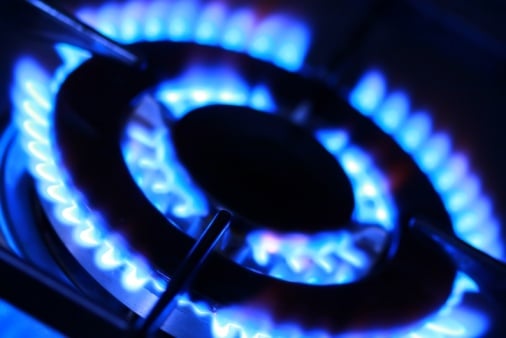
Source: Thinkstock
Natural gas futures were trading down about 0.7% in advance of the EIA’s report, at around $3.85 per million BTUs, and jumped to around $3.90 immediately following the report. Natural gas futures have slipped by more than $0.15 per million BTUs since last week.
Stockpiles are about 10.1% below their levels of a year ago and about 10.5% below the five-year average. The rise in U.S. stockpiles is still on course for a record April through October injection record. The start of the heating season is still expected to see U.S. stockpiles at around 3.55 trillion cubic feet, the lowest level since 2008, but still adequate. Last year’s injection season ended with 3.8 trillion cubic feet in inventory.
Natural gas prices tumbled after last week’s inventory report and the prospects for warmer temperatures. This week’s build is a bit less than the median estimate, and the northern states may see some cooler temperatures this week, increasing demand for heating. But the weather won’t be cool enough for long enough or spread over enough area to generate a significant increase in natural gas prices.
The EIA reported that U.S. working stocks of natural gas totaled 3.21 trillion cubic feet, about 378 billion cubic feet below the five-year average of 3.58 trillion cubic feet. Working gas in storage totaled 3.56 trillion cubic feet for the same period a year ago. Natural gas inventories continue to rise, but they remain below the bottom of the five-year range.
Here is how stocks of the largest U.S. natural gas producers reacting to this latest report:
Exxon Mobil Corp. (NYSE: XOM), the country’s largest producer of natural gas, was down about 1.5%, at $93.23 in a 52-week range of $84.79 to $104.76.
Chesapeake Energy Corp. (NYSE: CHK) was down about 3.2% at $19.97, after posting a new 52-week low of $19.83 earlier in the day. The 52-week high is $29.92. Chesapeake’s stock posted a new 52-week low after the EIA report last week as well.
EOG Resources Inc. (NYSE: EOG) was down 3% at $91.71. The 52-week range is $78.01 to $118.89.
The United States Natural Gas ETF (NYSEMKT: UNG) was up about 1.1%, at $20.90 in a 52-week range of $16.91 to $27.89.
ALSO READ: Massive Rise in Crude Oil Inventory Sends Prices Tumbling
Essential Tips for Investing: Sponsored
A financial advisor can help you understand the advantages and disadvantages of investment properties. Finding a qualified financial advisor doesn’t have to be hard. SmartAsset’s free tool matches you with up to three financial advisors who serve your area, and you can interview your advisor matches at no cost to decide which one is right for you. If you’re ready to find an advisor who can help you achieve your financial goals, get started now.
Investing in real estate can diversify your portfolio. But expanding your horizons may add additional costs. If you’re an investor looking to minimize expenses, consider checking out online brokerages. They often offer low investment fees, helping you maximize your profit.
Thank you for reading! Have some feedback for us?
Contact the 24/7 Wall St. editorial team.


